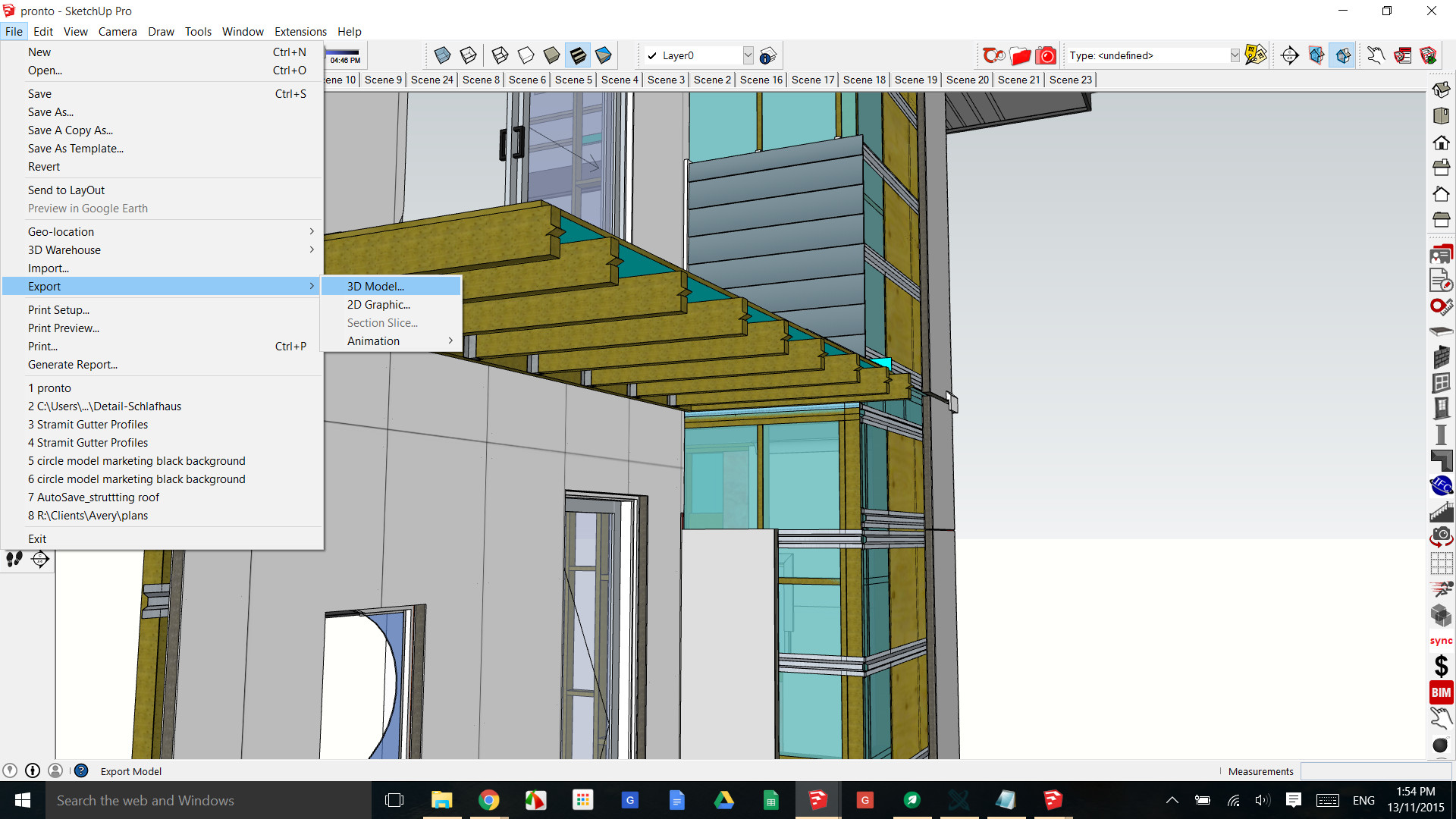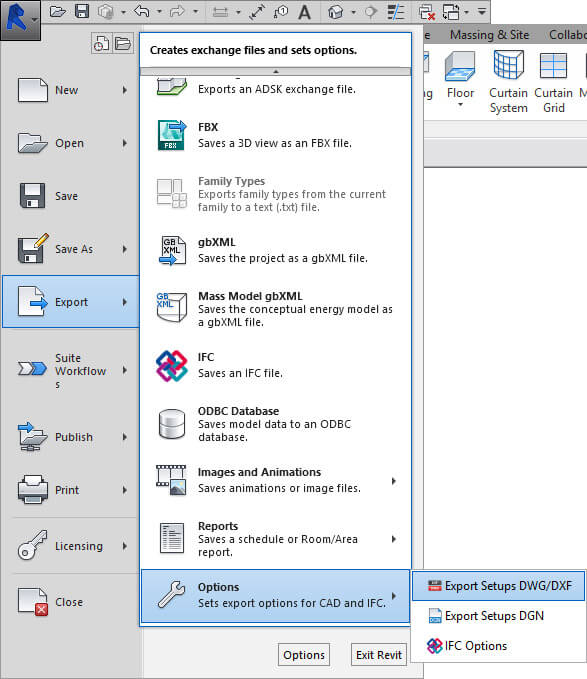

The geometry exported using the two plugins above is triangulated, and faces that share a common edge in Revit result in two edges that are very close together in SketchUp. Use the Geometry to Layer0 command in the CleanUp 3 plugin for SketchUp to automate this task.Īs mentioned above, there is a trade off between materials and editability when deciding on which method to use. Tip: In most cases, all geometry should reside on layer 0 (read SketchUp Layers: Part One – The Sacred Layer0 to find out why). Left: Raw geometry imported into SketchUp, Right: Geometry after the topography has been smoothed. The SketchUp file is saved as version 8, to retain maximum compatibility. Model location is also not transferred in the export. Additional alterations made to textures, such as transparency, stain or tint are not carried over, as these features are not built-in to SketchUp. The model is always exported with textures, and can be changed to shaded, hidden line or wireframe using the view styles in SketchUp. Plugin Details: Single ($99) or floating license ($299) available.Īfter installation, the plugin is available in the add-ins menu inside Revit.ĭetail level of the model is controlled by the setting in the 3D view (course, medium & fine). Method 1 – Revit Plugin: SimLab SKP Exporter The section box should be used to exclude any part of the building or topography that you don’t want. If there are model components (topo contours) or overlays (DWG files) that you don’t want in the SketchUp file, turn them off before exporting. Tip:You must be in a 3D view to export with either method.
Revit to sketchup export roof software#
Software Required: Revit, SketchUp Pro, SimLab SKP Exporter (Revit Plugin), RVT2SKP (Revit Plugin)

Two case studies are used to demonstrate the capability of both methods, and a comparison of geometry complexity and file size are included at the end of this tutorial. Exporting to DWG retains maximum editability while no materials are preserved. Using the plugin, the model retains it’s original materials, but editability is sacrificed. The first is by using a plugin, and the second is by exporting to a DWG file, then importing into SketchUp. There are two methods for transferring a model.
Revit to sketchup export roof how to#
This tutorial will show you how to export a Revit file to SketchUp.


 0 kommentar(er)
0 kommentar(er)
